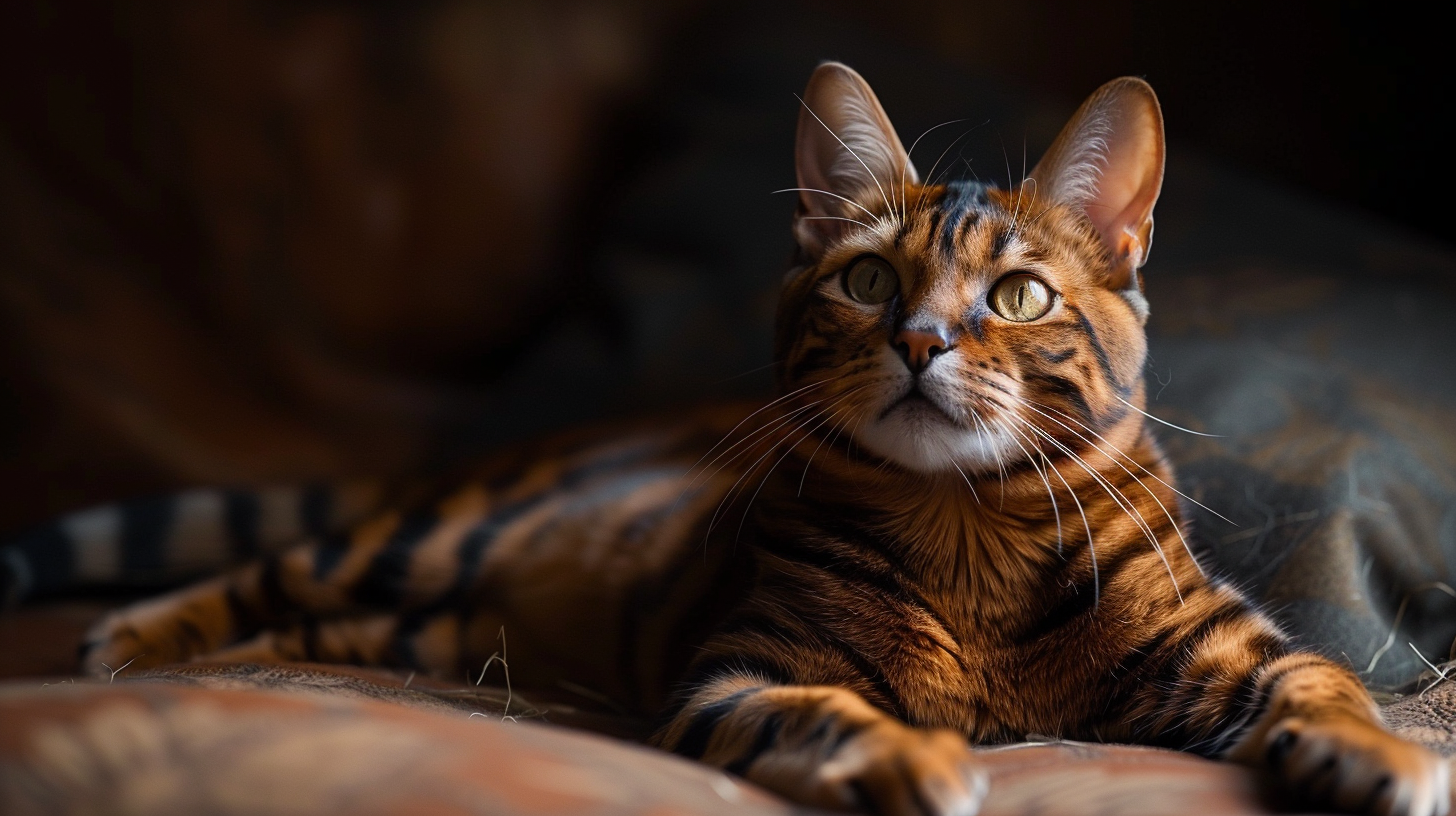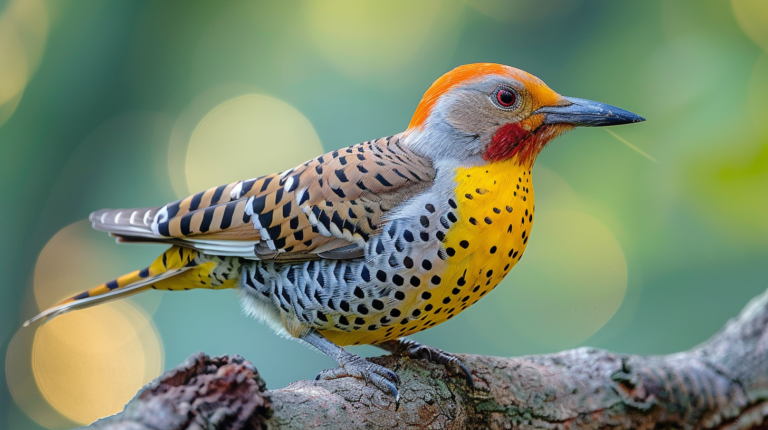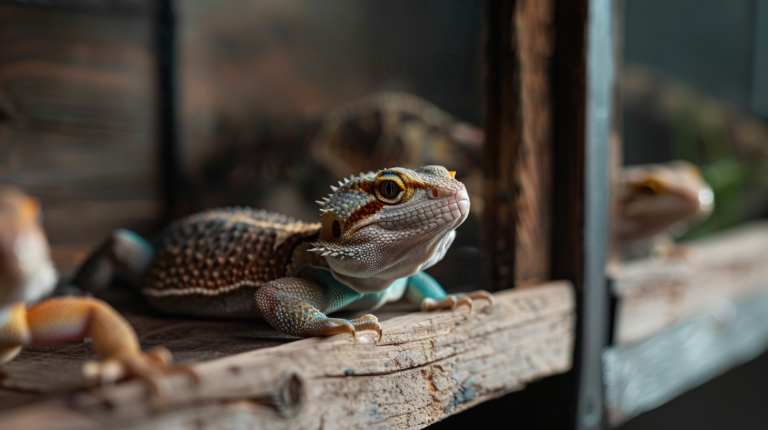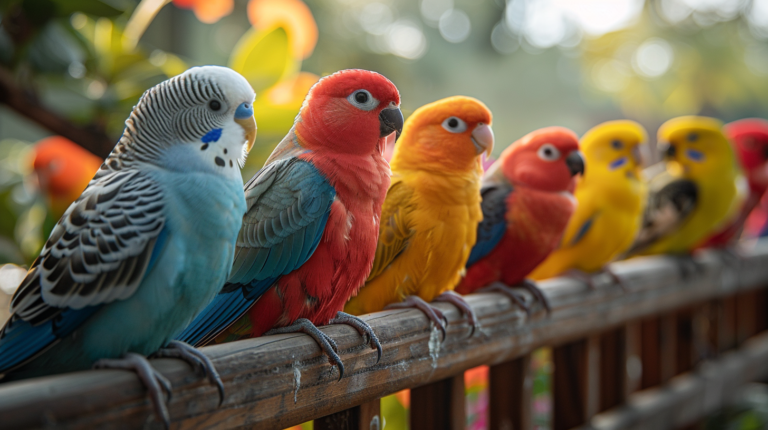Discover the Sokoke Cat’s fascinating secrets! Learn about this rare breed’s origins, care needs, and unique traits. Expert advice for potential Sokoke Cat owners.
Table of Contents
Did you know that fewer than 100 Sokoke Cats exist in the entire world today? This extraordinary feline, often called the “forest cat of Kenya,” represents one of nature’s most remarkable breeding achievements—a domestic cat that evolved naturally in the wild coastal forests of East Africa. The Sokoke Cat isn’t just rare; it’s a living piece of evolutionary history that challenges everything we thought we knew about domestic cat development.
When I first encountered a Sokoke Cat at a specialty cat show in Portland three years ago, I was immediately struck by its distinctive wood-grain coat pattern and alert, almost wild expression. The breeder explained that this wasn’t just another exotic breed created through selective breeding—this was a cat that nature herself had crafted over centuries in the Arabuko Sokoke Forest. That moment sparked my deep dive into understanding these incredible felines, and what I discovered will amaze any cat enthusiast.
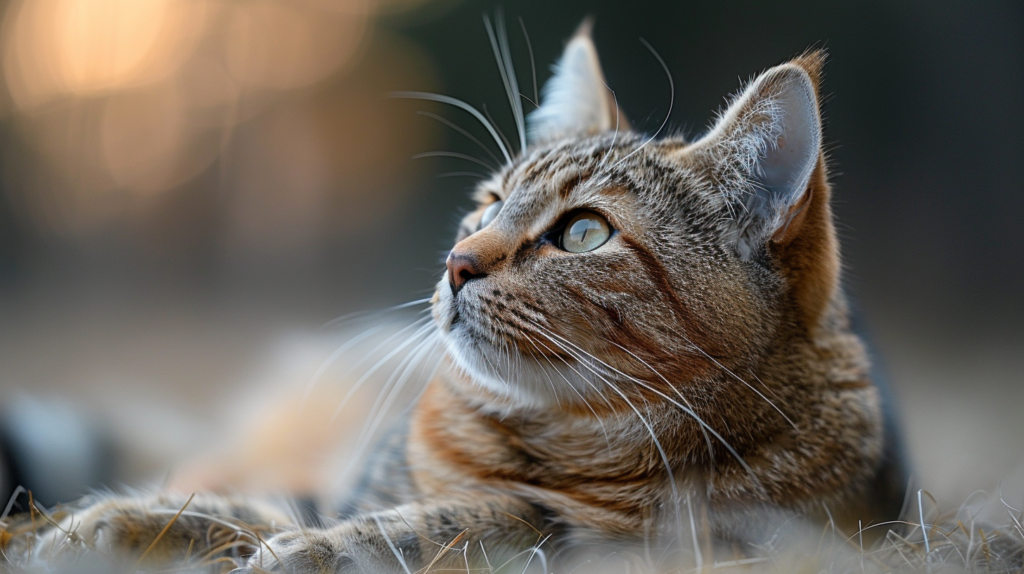
Whether you’re a seasoned cat owner curious about rare breeds or someone considering adding a Sokoke Cat to your family, this comprehensive guide reveals the seven most fascinating secrets about these extraordinary felines. From their unique hunting behaviors inherited from their wild ancestors to their surprisingly dog-like loyalty, the Sokoke Cat defies conventional cat stereotypes at every turn.
1. The Wild Origins: How Sokoke Cats Evolved Naturally in Kenya’s Forests
The Sokoke Cat’s story begins in the Arabuko Sokoke Forest of coastal Kenya, where these remarkable felines developed without human intervention for centuries. Unlike most cat breeds that result from selective breeding programs, Sokoke Cats represent a natural landrace—a locally adapted population that evolved specific traits through environmental pressures and natural selection.
The Discovery That Changed Everything
In 1978, Jeni Slater, a British expat living in Kenya, discovered several unusual cats living wild on her coconut plantation adjacent to the Arabuko Sokoke Forest. These cats displayed unique characteristics unlike any domestic breed she had encountered: a distinctive tabby pattern resembling wood grain, long legs adapted for climbing, and behavioral traits suggesting recent wild ancestry.
What made this discovery remarkable wasn’t just finding wild cats—it was recognizing that these felines represented a genetically distinct population. DNA analysis conducted in the 1990s revealed that Sokoke Cats possess genetic markers indicating they diverged from other domestic cat populations thousands of years ago, possibly through isolation in the coastal forests.
Environmental Adaptations
The harsh realities of forest life shaped every aspect of the Sokoke Cat’s development. The dense canopy and limited ground-level prey led to cats with exceptional climbing abilities and lean, muscular builds. Their distinctive coat pattern—featuring brown tabby markings on a lighter background—provided perfect camouflage among the dappled sunlight filtering through forest leaves.
These cats developed remarkable heat tolerance, essential for survival in Kenya’s tropical climate. Unlike many domestic breeds that struggle in temperatures above 85°F, Sokoke Cats thrive in hot, humid conditions. Their short, close-lying coat and efficient cooling mechanisms make them naturally suited for warm climates.
The Conservation Connection
Today, the Sokoke Cat serves as an unexpected ambassador for forest conservation. With the Arabuko Sokoke Forest facing pressure from development and climate change, these cats remind us of the irreplaceable genetic diversity hidden in natural ecosystems. Conservation efforts that protect the forest also preserve the wild gene pool that keeps the Sokoke Cat population genetically healthy.
| Characteristic | Sokoke Cat | Typical Domestic Cat |
|---|---|---|
| Origin | Natural evolution in Kenyan forests | Selective breeding programs |
| Genetic Diversity | High wild gene pool | Limited breeding lines |
| Climate Adaptation | Excellent heat tolerance | Variable climate adaptation |
| Physical Build | Lean, muscular, long-legged | Varied based on breed |
| Coat Pattern | Distinctive wood-grain tabby | Wide variety of patterns |
| Population Size | Under 100 worldwide | Millions globally |
2. The Distinctive Wood-Grain Coat Pattern That Defies Genetics
Perhaps no feature of the Sokoke Cat is more immediately striking than its distinctive coat pattern, often described as resembling wood grain or tree bark. This unique tabby variation, known as the “African pattern,” represents one of the most unusual coat genetics in the domestic cat world.
Understanding the African Pattern
The Sokoke Cat’s coat displays what geneticists call a “blotched tabby” or classic tabby pattern, but with characteristics unlike any other breed. Instead of the typical bold stripes or spots, Sokoke Cats exhibit a flowing, interconnected pattern that creates the illusion of wood grain running along their bodies. This pattern results from a specific combination of genes that control both the base color and the overlay pattern.
The base coat color ranges from warm cream to light brown, overlaid with darker brown markings that flow in broad bands across the cat’s sides and back. What makes this pattern truly unique is its consistency—while individual Sokoke Cats may vary slightly in intensity, the overall pattern remains remarkably uniform across the population, suggesting strong genetic fixation for these traits.
The Science Behind the Pattern
Recent genetic studies have revealed that the Sokoke Cat’s distinctive pattern results from variations in the Taqpep gene, which controls tabby pattern formation. However, Sokoke Cats carry a unique allele combination not found in other domestic cat populations. This genetic signature supports the theory that these cats developed in isolation, allowing rare genetic variants to become fixed in the population.
The pattern serves multiple practical purposes beyond aesthetics. In the dappled light of the forest canopy, this wood-grain pattern provides exceptional camouflage. Researchers have noted that Sokoke Cats can remain virtually invisible when motionless among fallen logs and sun-dappled undergrowth.
Color Variations and Standards
While all Sokoke Cats display the characteristic wood-grain pattern, subtle variations exist within the breed. Some individuals show a more pronounced contrast between the base and overlay colors, while others display a softer, more blended appearance. Breed standards recognize these natural variations as acceptable, understanding that maintaining genetic diversity is crucial for the breed’s long-term health.
The International Cat Association (TICA) recognizes only the brown spotted tabby pattern for Sokoke Cats, but breeders have occasionally reported individuals with silver variations. These silver Sokoke Cats, while stunning, are not accepted for breeding programs to maintain the breed’s genetic integrity.
Grooming Implications
The unique coat pattern affects grooming requirements in unexpected ways. The dense, short coat lies close to the body and rarely mats, but the pattern can make it challenging to spot certain skin conditions or parasites. Sokoke Cat owners need to be particularly thorough during grooming sessions, using their hands to feel for any irregularities that might be camouflaged by the busy coat pattern.
3. Athletic Abilities That Rival Wild Cats
Sokoke Cats possess athletic capabilities that set them apart from typical domestic cats, reflecting their wild forest heritage. These cats aren’t just agile—they’re living examples of feline physical excellence, with abilities that often surprise even experienced cat owners.
Exceptional Climbing Skills
The most immediately obvious athletic trait of Sokoke Cats is their extraordinary climbing ability. Unlike many domestic cats that climb cautiously or require encouragement to descend, Sokoke Cats navigate vertical surfaces with the confidence of their wild ancestors. Their long, powerful hind legs provide explosive jumping power, while their lean build and low body fat percentage make them natural climbers.
Sokoke Cats can easily leap to heights of six feet or more from a standing position, and they demonstrate remarkable balance when navigating narrow surfaces. Many owners report watching their Sokoke Cats walk along the tops of fence posts or balance on curtain rods with the casual confidence of a tightrope walker.
Swimming Abilities
Perhaps most surprising to new Sokoke Cat owners is their tendency to enjoy water. While not all individuals are enthusiastic swimmers, many Sokoke Cats show significantly more water tolerance than typical domestic cats. This trait likely evolved as an adaptation to the seasonal flooding that occurs in parts of their native habitat.
Some Sokoke Cats will wade into shallow water to hunt or drink, and a few exceptional individuals actually enjoy swimming. This water tolerance makes them easier to bathe than most cats and means they’re less likely to panic if accidentally exposed to water.
Speed and Agility
Sokoke Cats are built for speed, with a lean, aerodynamic body structure that enables impressive bursts of acceleration. Their long legs and flexible spine allow for extended strides, while their light bone structure reduces the energy cost of rapid movement. When motivated, a Sokoke Cat can reach speeds approaching 30 mph in short bursts.
This speed serves them well in interactive play sessions, where they can outmaneuver almost any toy. However, it also means that Sokoke Cat owners need to be particularly careful about escape routes. A motivated Sokoke Cat can cover surprising distances very quickly if they manage to get outside.
Intelligence and Problem-Solving
The athletic prowess of Sokoke Cats extends beyond mere physical ability to include remarkable problem-solving skills. These cats approach physical challenges with a methodical intelligence rarely seen in domestic breeds. They’ll study a climbing route before attempting it and often devise creative solutions to reach desired locations.
Many Sokoke Cat owners report that their cats learn to open doors, cabinets, and even simple latches. This intelligence, combined with their athletic ability, means that “cat-proofing” a home for a Sokoke Cat requires thinking several steps ahead of what might appeal to a highly capable feline mind.
Warning Signs to Watch For:
While their athleticism is impressive, Sokoke Cat owners should monitor for signs of overexertion or injury:
- Limping or favoring one leg after active play
- Reluctance to jump or climb, especially if previously enthusiastic
- Excessive panting after moderate activity
- Any swelling or heat in joints after exercise
- Changes in gait or movement patterns
For more expert pet care tips and product recommendations, visit BlithePet.com — your trusted source for pet wellness.
4. Unique Social Behaviors: The Dog-Like Cat
One of the most endearing and surprising aspects of Sokoke Cat ownership is discovering their distinctly dog-like social behaviors. These cats have evolved social patterns that differ significantly from typical domestic cat behavior, creating unique bonding experiences with their human families.
Pack Mentality and Loyalty
Unlike the independent stereotype associated with most cats, Sokoke Cats display what can only be described as pack loyalty. They often choose one family member as their primary person and demonstrate unwavering devotion to that individual. This loyalty manifests in several ways: following their chosen person from room to room, greeting them enthusiastically at the door, and showing genuine distress when separated for extended periods.
This pack mentality extends to their interaction with other pets in the household. Sokoke Cats often integrate seamlessly into multi-pet families, sometimes even taking on leadership roles among other cats or forming close bonds with dogs. Their natural social intelligence helps them read and respond to the emotional states of both human and animal family members.
Communication Patterns
Sokoke Cats are notably vocal cats, but their communication style differs from typical domestic cat vocalizations. They tend to use a wider range of sounds, including chirps, trills, and conversational meows that seem designed to engage human attention. Many owners report that their Sokoke Cats seem to “talk back” when spoken to, creating the impression of genuine conversation.
These cats also demonstrate sophisticated non-vocal communication. They’re highly attuned to human body language and facial expressions, often responding to subtle mood changes in their owners. This emotional intelligence makes them excellent therapy or emotional support animals for the right individuals.
Territory and Space Sharing
While most cats are territorial by nature, Sokoke Cats show more flexibility in sharing space, both with humans and other animals. They’re less likely to establish exclusive territories within the home and more willing to adapt their space usage based on family dynamics. This makes them excellent candidates for apartment living or homes with multiple pets.
However, their social nature means they don’t thrive in isolation. Sokoke Cats left alone for extended periods can develop separation anxiety or depression. They’re best suited for families where someone is home most of the day or where they have constant companionship from other pets.
5. Health Profile: Genetic Advantages of Wild Heritage
The Sokoke Cat’s wild heritage provides significant health advantages that set them apart from many purebred domestic cats. Their natural evolution has resulted in a breed largely free from the genetic health issues that plague cats developed through intensive selective breeding programs.
Genetic Diversity Benefits
One of the most significant health advantages of Sokoke Cats is their genetic diversity. Unlike breeds developed from small founding populations, Sokoke Cats maintain access to the wild gene pool in their native Kenya. This genetic diversity translates to what scientists call “hybrid vigor”—increased resistance to disease, better immune system function, and overall robust health.
Studies conducted by veterinary geneticists have found that Sokoke Cats show significantly lower rates of inherited diseases compared to most purebred cats. They don’t carry genes for common feline genetic disorders like polycystic kidney disease, hypertrophic cardiomyopathy, or hip dysplasia that affect many other breeds.
Common Health Considerations
While generally healthy, Sokoke Cats do have some breed-specific health considerations that owners should understand:
Neurological Sensitivity: Some Sokoke Cats show increased sensitivity to certain medications and anesthetics. This likely relates to their unique genetic background and means that veterinary procedures require careful medication dosing and monitoring.
Heat Regulation: While adapted for warm climates, Sokoke Cats can struggle in extremely cold conditions. Their lean build and short coat provide minimal insulation, making them susceptible to hypothermia in temperatures below 50°F.
Dietary Sensitivities: Sokoke Cats often have sensitive digestive systems that respond best to high-quality, natural diets. Many show adverse reactions to artificial preservatives, colors, or low-quality protein sources commonly found in commercial cat foods.
Lifespan and Aging
Sokoke Cats typically enjoy longer lifespans than many purebred cats, often living 15-18 years with proper care. Their genetic diversity seems to protect them from many age-related health issues, and they often remain active and alert well into their senior years.
However, their high activity levels mean that joint health becomes particularly important as they age. Regular veterinary monitoring and appropriate exercise modification can help maintain their quality of life throughout their golden years.
Preventive Care Recommendations
Successful Sokoke Cat health management focuses on preventive care:
- Annual veterinary exams with blood work to monitor kidney and liver function
- Dental care starting early, as their wild diet ancestry means they benefit from regular teeth cleaning
- Parasite prevention tailored to their higher activity levels and potential outdoor exposure
- Vaccination protocols that consider their unique immune system characteristics
- Weight management to maintain their naturally lean physique
When to Consult a Veterinarian Immediately:
- Any sudden change in activity level or appetite
- Difficulty breathing or excessive panting
- Neurological symptoms like loss of balance or coordination
- Signs of pain or stiffness, especially after exercise
- Digestive upset lasting more than 24 hours
6. Specialized Care Requirements for Optimal Health
Caring for a Sokoke Cat requires understanding their unique needs, which differ significantly from typical domestic cat care requirements. Their wild heritage and distinctive characteristics demand specialized approaches to nutrition, exercise, and environmental enrichment.
Nutritional Requirements
Sokoke Cats thrive on diets that closely mirror what their wild ancestors would have consumed. This means high-protein, moderate-fat diets with minimal carbohydrates. Many commercial cat foods contain too many plant-based ingredients and artificial additives for optimal Sokoke Cat health.
Protein Requirements: Sokoke Cats require at least 40-45% protein in their diet, significantly higher than the 26% minimum required for most domestic cats. This high protein requirement supports their lean muscle mass and high energy levels.
Fat Content: Moderate fat levels (12-15%) work best for Sokoke Cats. Too much fat can lead to digestive upset, while too little can affect their coat quality and energy levels.
Carbohydrate Sensitivity: Many Sokoke Cats show sensitivity to high-carbohydrate diets. Grains and plant-based fillers can cause digestive issues and may contribute to weight gain despite their active nature.
Exercise and Environmental Enrichment
The high activity levels and intelligence of Sokoke Cats demand extensive environmental enrichment. A bored Sokoke Cat can become destructive, anxious, or depressed.
Vertical Space: These cats need abundant climbing opportunities. Cat trees should be tall and sturdy enough to support an adult cat’s enthusiastic climbing. Many owners find that multiple cat trees or wall-mounted shelving systems work better than single structures.
Interactive Play: Sokoke Cats require at least 30-45 minutes of active play daily. They respond well to puzzle feeders, interactive toys, and games that simulate hunting behaviors. Laser pointers should be used cautiously and always ended with a physical catch to satisfy their hunting instincts.
Mental Stimulation: Rotation of toys, puzzle feeders, and training sessions help keep these intelligent cats mentally engaged. Many Sokoke Cats can learn tricks, walk on leashes, and even perform simple agility courses.
Grooming and Maintenance
Despite their short coats, Sokoke Cats benefit from regular grooming that serves multiple purposes beyond coat care.
Coat Care: Weekly brushing with a fine-toothed comb helps remove loose hair and allows for close inspection of the skin. Their distinctive pattern can hide skin issues, making regular hands-on examination important.
Nail Care: Their climbing nature means frequent nail trimming is essential. Sokoke Cats typically require nail trims every 2-3 weeks to prevent overgrowth and maintain their grip while climbing.
Dental Hygiene: Regular teeth brushing or dental treats help maintain oral health. Their wild ancestry means they may be more prone to tartar buildup on commercial diets.
| Care Aspect | Daily | Weekly | Monthly | Annually |
|---|---|---|---|---|
| Interactive Play | 30-45 minutes | N/A | N/A | N/A |
| Food/Water | Fresh provision | Bowl cleaning | Deep sanitization | Diet evaluation |
| Grooming | Visual inspection | Full brushing | Nail trimming | Professional grooming |
| Health Monitoring | Behavior observation | Weight check | Dental inspection | Veterinary exam |
| Environment | Toy rotation | Deep cleaning | Equipment inspection | Safety assessment |
7. The Challenge of Finding and Acquiring a Sokoke Cat
Perhaps the most significant challenge facing potential Sokoke Cat owners is simply finding one. With fewer than 100 individuals worldwide, acquiring a Sokoke Cat requires patience, research, and often significant financial investment.
Global Breeding Programs
Currently, serious Sokoke Cat breeding programs exist in only a handful of countries. The most established programs operate in Denmark, where Slater relocated some of the original cats, and in the United States, where a small number of dedicated breeders work to maintain the breed.
European Programs: Denmark remains the center of Sokoke Cat breeding outside of Kenya. Gloria Moeldrup, who worked with Jeni Slater, established the primary European bloodlines. These programs focus heavily on maintaining genetic diversity while establishing breed characteristics.
North American Efforts: The United States has several small-scale breeding programs, primarily on the East and West coasts. These breeders often work collaboratively to manage breeding decisions and maintain genetic health across the small population.
African Conservation: In Kenya, some efforts exist to protect the wild population, but these focus more on conservation than domestic breeding. The original forest population remains the genetic foundation for all breeding programs worldwide.
What to Expect When Seeking a Sokoke Cat
Prospective Sokoke Cat owners should prepare for a lengthy process that may involve waiting lists, extensive screening, and significant travel.
Waiting Lists: Most reputable Sokoke Cat breeders maintain waiting lists that can extend 2-3 years. This isn’t unusual given the small breeding population and limited number of kittens produced annually.
Screening Process: Responsible breeders conduct extensive screening of potential owners. This includes home visits, references, and detailed discussions about the commitment required to care for such a rare breed.
Cost Considerations: Sokoke Cats typically cost $1,500-$3,000, not including transportation costs if the breeder is located far from the buyer. This high cost reflects their rarity and the expense of maintaining responsible breeding programs.
Transportation: Many buyers must travel significant distances or arrange specialized pet transportation. This adds both cost and stress to the acquisition process.
Red Flags and Breeding Ethics
The rarity of Sokoke Cats unfortunately creates opportunities for unethical breeding practices. Potential owners must be vigilant about identifying responsible breeders.
Warning Signs of Unethical Breeders:
- Promising immediate availability of kittens
- Unwillingness to provide health testing results
- Breeding cats without proper registration or documentation
- Mixing Sokoke Cats with other breeds
- Selling cats without spay/neuter requirements
- Asking for full payment before meeting the cat
Questions to Ask Reputable Breeders:
- What health testing do you perform on breeding cats?
- Can you provide references from previous buyers?
- What support do you offer after purchase?
- How do you contribute to the breed’s conservation?
- Can I meet the kitten’s parents?
Alternatives and Related Breeds
Given the difficulty of acquiring a true Sokoke Cat, some people consider related breeds that share certain characteristics.
Egyptian Mau: Shares some physical similarities and active temperament Abyssinian: Similar energy levels and intelligence Ocicat: Spotted pattern and dog-like loyalty Bengal: Wild appearance and high activity levels
However, potential owners should understand that none of these breeds truly replicate the unique combination of traits found in Sokoke Cats.
8. Training and Socialization: Maximizing Your Sokoke Cat’s Potential
The intelligence and social nature of Sokoke Cats make them highly trainable, but their wild heritage requires specialized approaches to training and socialization. Understanding how to work with their natural instincts rather than against them is key to successful Sokoke Cat ownership.
Early Socialization Critical Period
Sokoke kittens require extensive socialization during their first 16 weeks of life. This critical period shapes their adult behavior and determines how well they’ll adapt to domestic life.
Human Interaction: Sokoke kittens need daily handling by multiple people to develop appropriate social bonds. Unlike some breeds that naturally gravitate toward humans, Sokoke kittens can become skittish or overly wild without sufficient positive human contact.
Environmental Exposure: These kittens benefit from controlled exposure to various household sounds, textures, and experiences. Their keen intelligence means they remember both positive and negative experiences strongly, making early positive exposure crucial.
Animal Socialization: Sokoke kittens should meet other cats, dogs, and even other species when possible. Their pack mentality makes them generally accepting of other animals, but early socialization ensures these interactions remain positive throughout their lives.
Training Approaches That Work
Sokoke Cats respond best to training methods that engage their intelligence and work with their natural behaviors.
Positive Reinforcement: These cats are highly food-motivated and respond excellently to treat-based training. Their intelligence means they quickly learn cause-and-effect relationships, making consistent positive reinforcement highly effective.
Clicker Training: Many Sokoke Cats excel at clicker training, learning complex behaviors and even tricks. Their dog-like attention to human cues makes them excellent candidates for advanced training techniques.
Environmental Management: Rather than trying to suppress natural behaviors, successful Sokoke Cat training focuses on channeling these behaviors appropriately. Providing adequate climbing opportunities prevents furniture climbing; puzzle feeders satisfy hunting instincts.
Common Training Challenges
While highly trainable, Sokoke Cats present unique training challenges that owners must understand and address.
Selective Attention: These cats can be selective about when they choose to respond to commands. Unlike dogs, which typically show consistent obedience, Sokoke Cats may choose to ignore commands when distracted or uninterested.
High Energy Management: Their activity levels can make training sessions challenging. Short, frequent training sessions work better than longer, less frequent ones.
Independence Balance: While social, Sokoke Cats maintain an independent streak that can conflict with training goals. Successful training respects this independence while establishing necessary boundaries.
9. Common Myths About Sokoke Cats Debunked
Despite their unique characteristics, several myths and misconceptions surround Sokoke Cats. These false beliefs can prevent potential owners from understanding what living with these cats really entails.
Myth 1: Sokoke Cats Are Too Wild for Domestic Life
Reality: While Sokoke Cats retain some wild characteristics, they adapt excellently to domestic life when properly socialized. Their intelligence and social nature actually make them more interactive with humans than many traditional domestic breeds. The key is understanding and accommodating their needs rather than expecting them to behave like typical house cats.
Myth 2: They Require Outdoor Access to Be Happy
Reality: Sokoke Cats can thrive indoors with proper environmental enrichment. While they appreciate outdoor access when safely provided, many live fulfilling lives as indoor cats. The crucial factor is providing adequate vertical space, interactive play, and mental stimulation.
Myth 3: Sokoke Cats Are Aggressive Due to Wild Heritage
Reality: Properly socialized Sokoke Cats are typically gentle, affectionate companions. Their wild heritage contributes to confidence and athleticism, not aggression. In fact, their pack mentality often makes them more social and less territorial than typical domestic cats.
Myth 4: They Can’t Be Trained Like Other Cats
Reality: Sokoke Cats are among the most trainable cat breeds due to their high intelligence and social nature. Many learn to walk on leashes, perform tricks, and respond to complex commands. Their dog-like loyalty actually makes them more responsive to training than many traditional cat breeds.
Myth 5: They Have Constant Health Problems
Reality: Sokoke Cats are generally healthier than many purebred cats due to their genetic diversity. While they have some specific care requirements, their wild heritage provides them with robust immune systems and fewer genetic health issues than breeds developed through intensive selective breeding.
10. Integration with Multi-Pet Households
The pack mentality and social intelligence of Sokoke Cats often make them excellent additions to multi-pet households, but successful integration requires understanding their unique social dynamics.
Introducing Sokoke Cats to Other Cats
Sokoke Cats typically integrate well with other cats, often taking on leadership roles within cat groups. Their confidence and social skills help them navigate feline hierarchies effectively.
Introduction Process: Gradual introduction over 2-3 weeks works best. Sokoke Cats’ intelligence means they understand and respect proper introduction protocols when given adequate time to assess new feline housemates.
Hierarchy Dynamics: These cats often naturally assume alpha roles but rarely use aggression to maintain status. Their leadership style tends to be more about confidence and resource control than physical dominance.
Play Compatibility: Their high energy levels make them excellent playmates for other active cats. However, their intensity can overwhelm more sedentary cats, requiring careful monitoring during play sessions.
Sokoke Cats and Dogs
The dog-like qualities of Sokoke Cats often translate to excellent relationships with canine family members. Many Sokoke-dog relationships develop into close friendships that benefit both species.
Size Considerations: Sokoke Cats’ confidence means they rarely show fear around larger dogs. However, their athletic ability means they can easily escape if needed, reducing conflict potential.
Activity Matching: These cats often match well with active dog breeds that enjoy interactive play. Many develop play routines that incorporate both species’ natural behaviors.
Pack Integration: Sokoke Cats often integrate into dog packs, sometimes even joining in group activities like greeting family members at the door or following the pack leader around the house.
| Household Type | Sokoke Cat Compatibility | Key Considerations | Success Factors |
|---|---|---|---|
| Single Cat Home | Excellent | May become lonely without companionship | Adequate human interaction |
| Multi-Cat Home | Very Good | May assume leadership role | Gradual introduction process |
| Cat-Dog Home | Excellent | Forms strong bonds with dogs | Activity level matching |
| Small Children | Good with proper introduction | Requires supervised interactions | Early socialization crucial |
| Senior Adults | Moderate | High energy may be overwhelming | Modified exercise needs |
| Apartment Living | Good | Needs vertical space and enrichment | Adequate indoor stimulation |
FAQ
Conclusion: Living with a Living Legend
The Sokoke Cat represents something truly special in the domestic cat world—a living bridge between wild and domestic, ancient and modern. These remarkable felines offer their owners a unique experience that combines the comfort of domestic companionship with the thrill of living alongside a piece of evolutionary history.
Owning a Sokoke Cat is not for everyone. These cats demand high levels of interaction, sophisticated environmental enrichment, and owners who understand and appreciate their unique needs. They’re not suitable as casual pets or for families looking for low-maintenance companionship. However, for the right families, Sokoke Cats provide unparalleled loyalty, intelligence, and companionship.
As we’ve explored throughout this guide, the seven fascinating secrets of Sokoke Cats—their wild origins, distinctive coat pattern, athletic abilities, dog-like loyalty, genetic health advantages, specialized care needs, and extreme rarity—combine to create a truly extraordinary companion animal. These cats challenge our preconceptions about domestic cats while offering glimpses into the remarkable adaptability and intelligence of the feline species.
The future of the Sokoke Cat depends on dedicated breeders, passionate owners, and conservation efforts that protect both the domestic population and their wild cousins in Kenya’s forests. Every Sokoke Cat represents hope for preserving genetic diversity in domestic animals while maintaining our connection to the natural world.
For those fortunate enough to share their lives with a Sokoke Cat, the experience provides daily reminders of the remarkable adaptability and intelligence that nature can produce. These cats don’t just live with their families—they become integral parts of them, offering loyalty, companionship, and endless fascination.
Are you ready to become part of the exclusive community of Sokoke Cat owners? The journey may be challenging, but for those who succeed, the reward is sharing your life with one of nature’s most remarkable domestic animals.
Have a similar experience with your pet? Share it in the comments below! Don’t forget to check out our other helpful guides at BlithePet.com.

